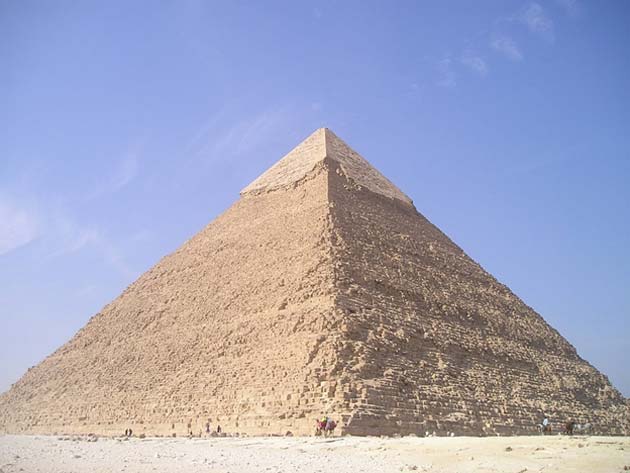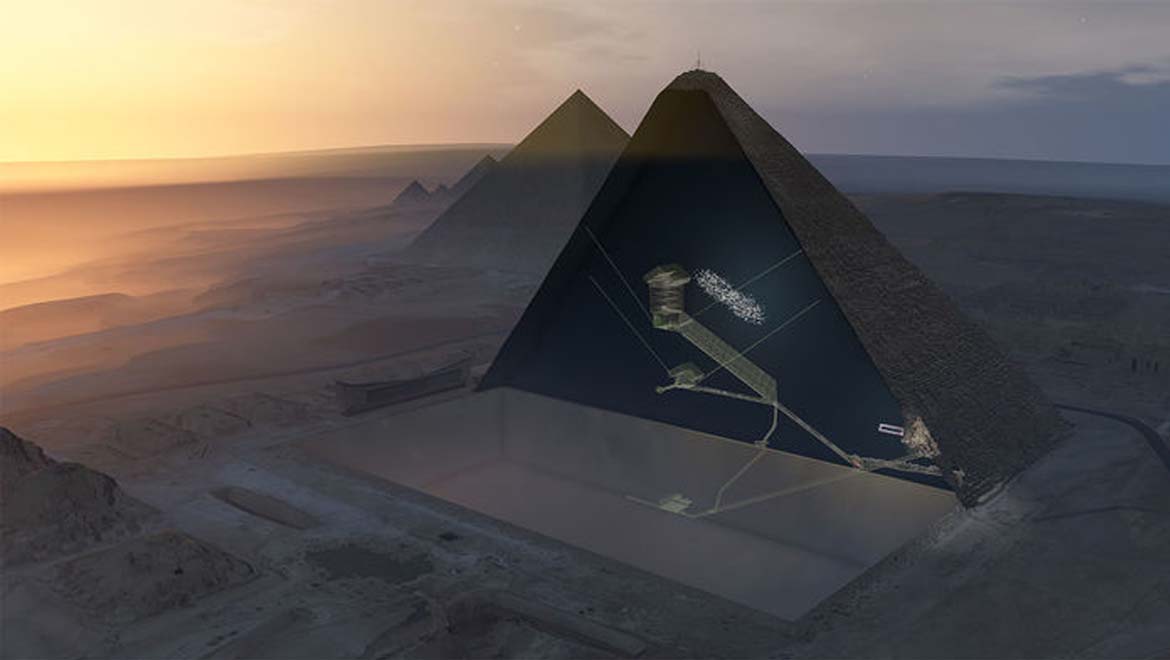The Great Pyramid of Giza, an Ancient Wonder of the World, is considered an engineering marvel built as a tomb for the pharaoh Khufu. This largest and oldest of the three pyramids is estimated to be about 140 meters tall and 230 meters in width. A structure that attracts millions of tourists per year also surrounds itself with theories and many unanswered questions regarding its age and architecture.
Now, yet another mystery has been revealed by this enigmatic structure:
Earlier this month it was revealed that an unknown void was discovered in the chambers of the Great Pyramid. The discovery came about using subatomic particles, or cosmic rays, beamed from outside the solar system. Although the shape and significance of the cavity is yet to be analyzed, Mehdi Tayoubi of the Heritage Innovation Preservation Institute in Paris said, “Such a big void can’t be an accident.”
Well, it certainly seems that this secret room has piqued the interest of historians, archeologists, physicists and enthusiasts around the world!
Cosmic Rays and The Great Pyramid of Giza
So what did cosmic rays have to do with it?
Thousands of high-energy radiations are sent to the Earth’s atmosphere from outer space, and one of these is called muons. These are similar to elementary particles like electrons, but much more massive. These heavy, negatively charged muons are not easily absorbed on the way due to their weight, until they are slowed down by obstacles with large masses on Earth.
This is potentially what occurred in the case of the Egyptian pyramid too. The cosmic muons passed through an empty space repeatedly, which was detected on a monitor and analyzed over a period of time, resulting in the conclusion that a hollow space indeed existed somewhere in the center of the pyramid’s framework.

Great pyramid of Giza. (Public Domain)
What This Discovery Means
Plenty more data needs to be collected and at least a few more years of research done to understand the cavity’s function and entire structure. But for now, experts have only guessed this its function. So far it is believed to be about 100 feet long, not even if it is horizontal or inclined or made up of several other structures.
Archeologist, Mark Lehner, who was not a part of the project, believes that it could be a burial chamber due to its inaccessibility, but Tayoubi disagreed. He said: “It’s not the ideal place to contain a body. It could have purely symbolic meaning, as a passage for the pharaoh’s soul.”
On the same topic, Cairo’s Egyptologist, Zahi Hawass cautions about calling this “a secret room” as he suggested that builders in those days left such gaps, on purpose, to prevent collapse from the weight of the stone blocks, and protect the “king’s room.”
The discovery of this cavity in the Egyptian pyramid has been impactful as it also opens up new avenues about the how the building of such a monumental construction, with heavy stones, took place some 4000 years ago.
ScanPyramids Project
Although experiments using muon imaging were conducted in Giza’s Khafre pyramid since the late 1960s, there was nothing discovered until 2016 when a team led by Kunihiro Morishimo of the Nagoya University measured readings that indicated the presence of an anomaly.
After months of research, three, previously unknown, chambers connecting to the grand gallery were found. The study and discovery of this great void, a few days ago, was a part of the ScanPyramids Project, a mission undertaken by the Ministry of Antiquities, Egypt, to explore the insides of the country’s largest pyramids using technology.
This is probably just the beginning to entering a world of the unknown. Who knows what lies ahead? But one thing is for certain, it sure is exciting!
Top image: Artist’s rendering of a cross-section of the Great Pyramid showing the newly discovered void (represented as a white area) above the large inclined corridor known as grand gallery. Credit: ScanPyramids mission







No comment